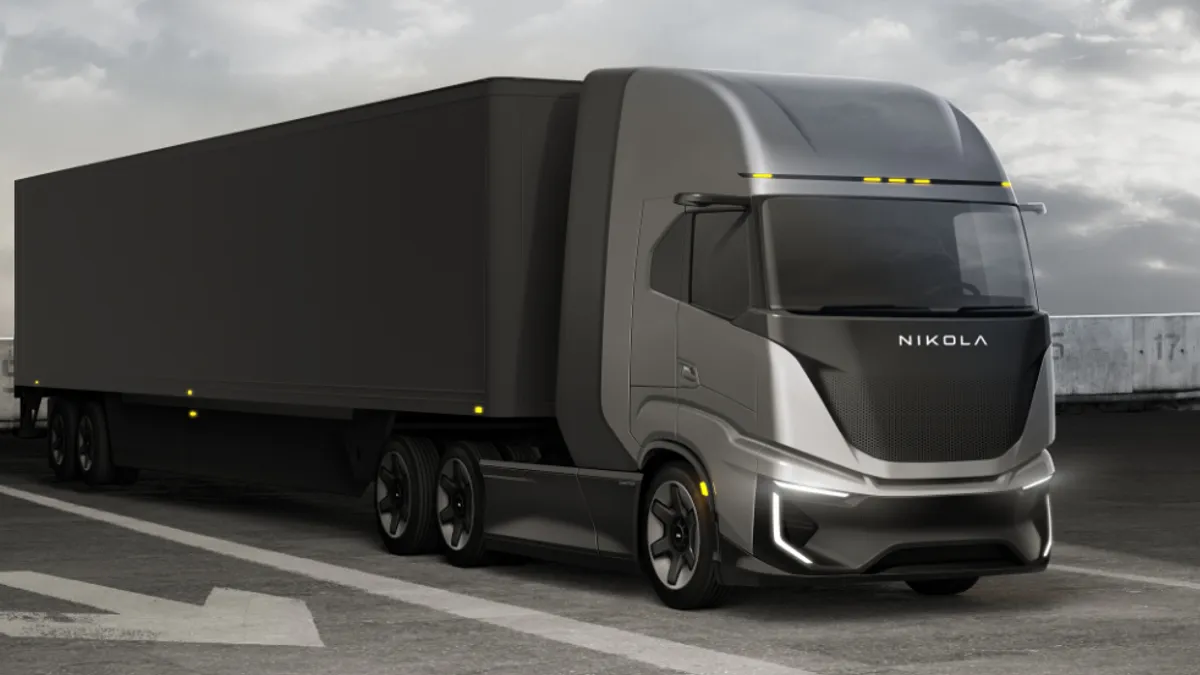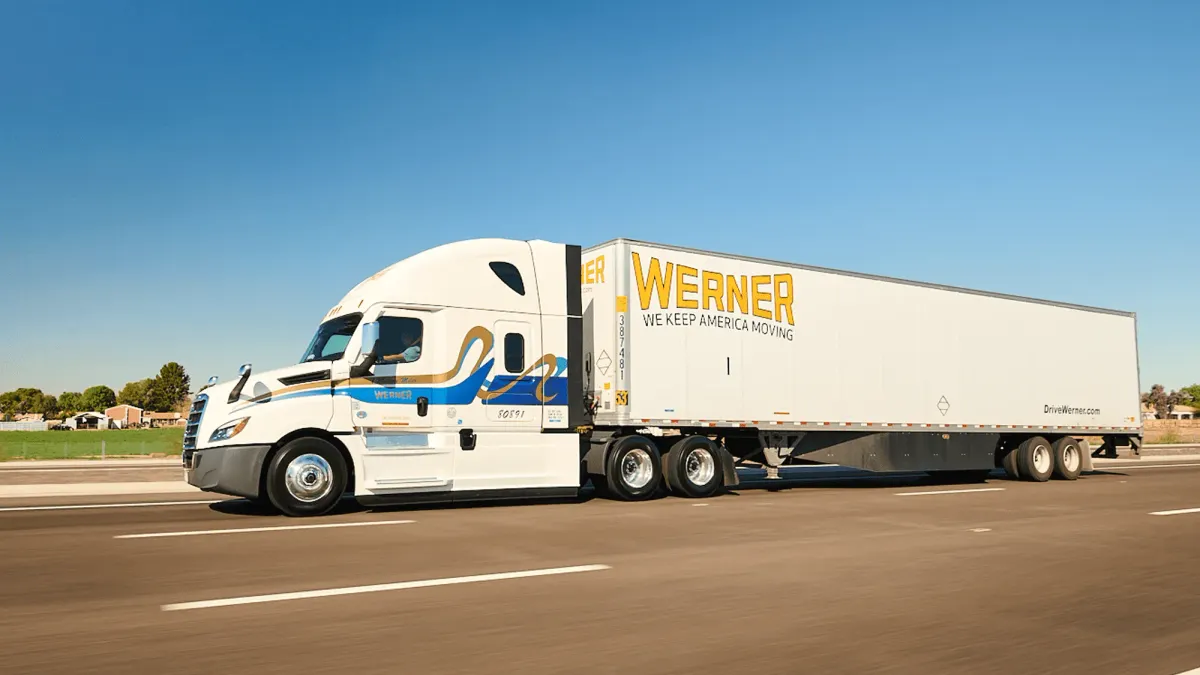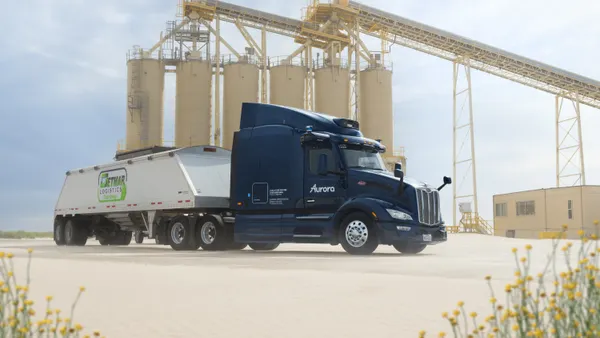Dive Brief:
- Nikola has secured a $2 million grant from the U.S. Department of Energy to study autonomous refueling at hydrogen stations, the OEM announced Thursday. Such fueling would minimize labor costs and reduce the need for maintenance of equipment, Nikola said.
- Autonomous fueling should allow a heavy-duty fuel-cell-electric truck to fuel in less than 20 minutes, Nikola said. Hydrogen is seen as a quick way to refuel trucks, as opposed to recharging batteries, which can take up to five hours, according to Deloitte.
- Autonomous refueling would involve removing the human labor needed to take a hydrogen pump and to insert the nozzle into the truck tank. The process could involve a robotic arm, as is being used by Robofuel.
Dive Insight:
Hydrogen-fueled trucks have better range than battery-electric trucks, and they do not have to charge for hours. But the electric infrastructure is already generally built in the United States, and it's everywhere. And it's generally easy to add power plants to add capacity. There are a handful of hydrogen fueling stations in the United States, with only a few more planned.
What's missing for FCEVs' future is the resolve the United States had when industries realized gasoline was the future of motor cars. After that realization, gasoline fueling stations popped up in towns and counties across North America.
Chris Nelder, the former manager of the Electric Vehicles-Grid Initiative for the Rocky Mountain Institute, told Transport Dive in February that it is easier to add power generation to the electricity grid than it is to add hydrogen fuel stations across the United States.
"There's no doubt in my mind that they will get there before the hydrogen infrastructure gets its shoes on," said Nelder.
But electric has its own problems, despite the fact that electricity is wired to reach almost everywhere in the United States. Craig Knight, Hyzon CEO, told Transport Dive in March that potential buyers of Hyzon's FCEVs tell him about the problems that BEVs present in terms of refueling.
The problem for electric trucks is the national grid, Knight said. Hyzon customers told him that the grid is not ready for a large number of electric trucks using at least 1.7 megawatts, per tractor, for several hours of charging. Regional grids have had current problems accommodating electric buses and trucks, Knight said. It means expensive new electric buses and trucks, powered by large and heavy batteries, have to be taken off the road from time to time, because the grid cannot handle such demand.
The OEMs have taken sides, but it splits down the middle, with electric seen as having the best future by Daimler Trucks North America, Tesla and Scania. But hydrogen-propelled trucks have big backers. Toyota and Hino Motors have partnered on FCEVs. Cummins and Navistar have partnered on Class 8 hydrogen trucks that Werner would test for regional hauls in California. Hyundai is marketing an autonomous Class 8 truck that will use hydrogen. And Nikola is planning to produce both BEVs and FCEVs.
"This funding is essential to advance key hydrogen fueling technologies that can improve the overall efficiency of fuel-cell commercial vehicles, while maintaining the safety and reliability standards required,” Pablo Koziner, Nikola president of the energy and commercial segments, said in a press release. "The work we are doing with the Department of Energy and our partners on fueling technology is part of Nikola’s holistic approach to the hydrogen ecosystem."









